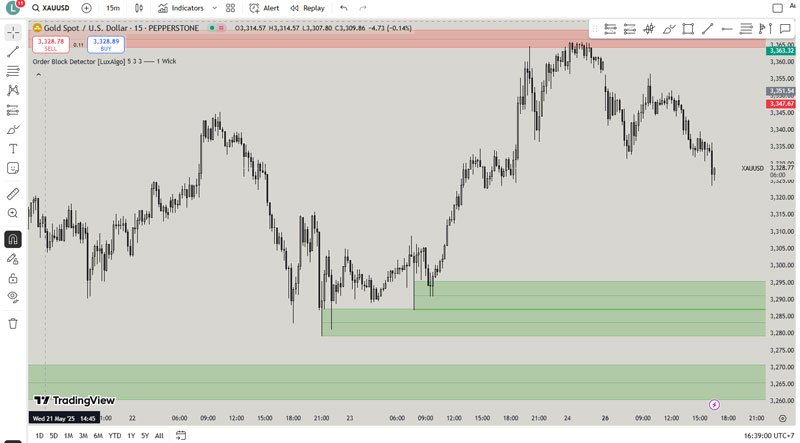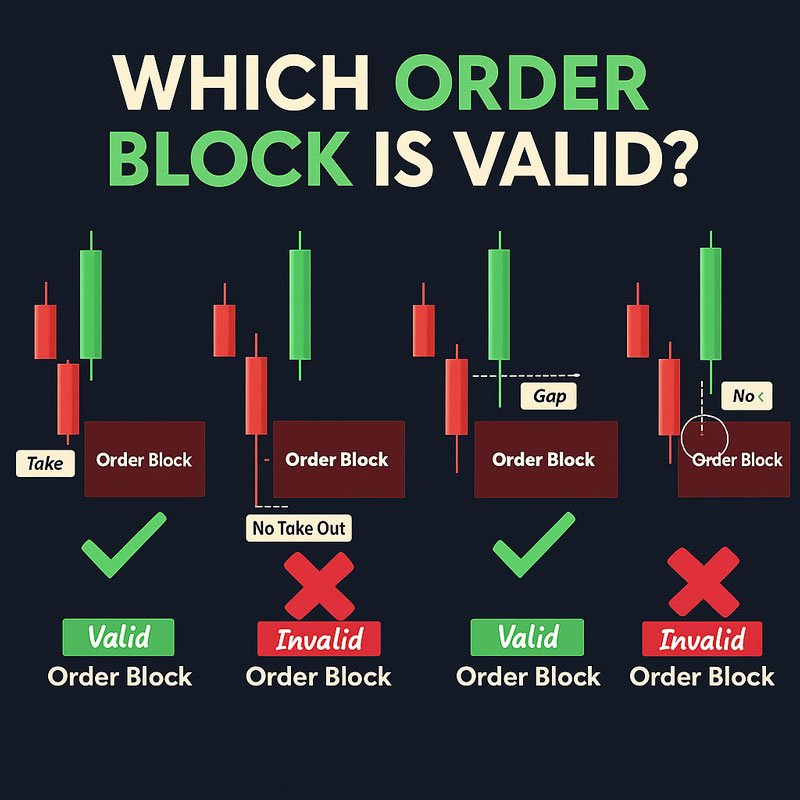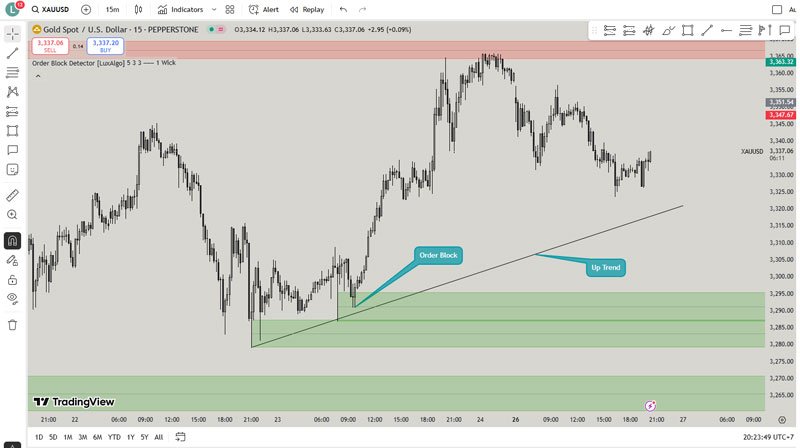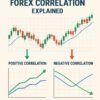The forex market, with its daily trading volume exceeding $7 trillion, offers immense opportunities for traders. However, navigating this dynamic market requires effective strategies. One such strategy gaining traction among traders is order block trading. This approach, rooted in institutional trading patterns, helps traders identify high-probability price levels for entering and exiting trades. If you’re new to forex, this guide will walk you through the essentials of order block trading, explain its mechanics, and provide actionable steps to implement it effectively.
Introduction to Order Block Trading
Order block trading is a price action strategy that focuses on identifying areas where large institutional traders, such as banks and hedge funds, place significant buy or sell orders. These areas, known as order blocks, act as key price zones where the market is likely to reverse or continue its trend. Unlike traditional indicators, order block trading relies on understanding market structure and price behavior, making it a powerful tool for beginners and seasoned traders alike.
Why should you care about order block trading? Because it aligns your trades with the “smart money”—the institutions that drive market movements. By mastering this strategy, you can improve your trade accuracy and make informed decisions in the volatile forex market.
Key Point: Order block trading is not about guessing; it’s about analyzing where institutional traders are active to predict price movements.
What Are Order Blocks?

An order block is a specific price zone where institutional traders accumulate large buy or sell orders. These zones appear as consolidation areas on a price chart, often before a significant market move. There are two types of order blocks:
- Bullish Order Block: A consolidation zone before an upward price move, indicating strong buying interest.
- Bearish Order Block: A consolidation zone before a downward price move, signaling strong selling pressure.
For beginners, think of order blocks as “footprints” left by big players. These zones are critical because the market often revisits them, making them reliable areas for trade setups.
Key Point: Order blocks are not random; they represent areas of high liquidity where institutions strategically place orders.
To better understand, consider exploring price action trading basics to see how order blocks fit into broader market analysis.
How Order Block Trading Works
Order block trading revolves around identifying these institutional zones and using them to predict price reversals or continuations. Here’s a breakdown of how it works:
Identifying Order Blocks

Order blocks appear as tight consolidation zones on a price chart, often marked by a series of small candles before a strong price move. To spot them:
- Use higher timeframes (e.g., 4-hour or daily charts) for clarity.
- Look for a cluster of candles with low volatility followed by a sharp price breakout.
- Confirm with volume spikes, indicating institutional activity.
Key Characteristics
- Price Levels: Order blocks form at key support or resistance levels.
- Volume: High volume during the consolidation phase signals institutional involvement.
- Consolidation: The zone often looks like a “pause” before a big move.
Trading the Block

Once identified, wait for the price to return to the order block. This revisit often triggers a reversal or continuation, depending on the market trend. Use additional tools like Fibonacci retracement or candlestick patterns for confirmation.
Key Point: Patience is crucial—wait for the price to retest the order block before entering a trade.
For a deeper dive, check out our guide on how to read forex charts to enhance your chart analysis skills.
Why Use Order Block Trading?
Order block trading offers several advantages, especially for forex beginners. Here’s why it’s worth learning:
Benefits
- High-Probability Setups: Order blocks align with institutional activity, increasing trade accuracy.
- Versatility: Works across forex pairs, stocks, and cryptocurrencies.
- Simplicity: Relies on price action, reducing dependence on complex indicators.
- Risk Management: Clear entry and exit points help minimize losses.
Risks and Limitations
- False Signals: Not all order blocks lead to reversals; market context is critical.
- Learning Curve: Beginners may struggle to identify valid blocks initially.
- Market Noise: Lower timeframes can produce misleading signals.
To mitigate risks, combine order block trading with proper risk management strategies.
Key Point: Order block trading is powerful but requires practice to master its nuances.
Steps to Trade Order Blocks
Ready to start order block trading? Follow these steps to implement the strategy effectively:
Tools Needed
- Charting Platform: Use platforms like MetaTrader 4/5 or TradingView.
- Timeframes: Focus on 4-hour or daily charts for reliable signals.
- Indicators: Optional tools like volume indicators or Fibonacci retracement. Indicator Order Block Lux Algo
Step-by-Step Process

- Identify the Trend: Determine if the market is bullish, bearish, or ranging using trendlines or moving averages.
- Spot the Order Block: Look for consolidation zones before a strong price move. Mark the high and low of the block.
- Wait for Retest: Monitor the price as it returns to the block. Look for confirmation signals like pin bars or engulfing candles.
- Set Entry and Exit Points:
- Entry: Enter when the price reacts to the block (e.g., a bounce for a bullish block).
- Stop Loss: Place below the block for buys or above for sells.
- Take Profit: Target the next key level (e.g., recent high/low or Fibonacci extension).
- Manage Risk: Risk no more than 1–2% of your account per trade.
Example
Imagine EUR/USD on a 4-hour chart. You spot a bullish order block after a consolidation zone at 1.1000, followed by a rally to 1.1200. When the price retraces to 1.1000 and forms a bullish pin bar, you enter a buy trade with a stop loss at 1.0970 and a take profit at 1.1200.
Key Point: Always backtest your order block trading strategy on a demo account before going live.
Learn more about demo trading accounts to practice without risking real money.
Common Mistakes to Avoid
Beginners often make errors when starting with order block trading. Here are pitfalls to watch out for:
- Misidentifying Order Blocks: Not every consolidation is an order block. Confirm with volume and market context.
- Trading Against the Trend: Avoid trading order blocks that contradict the overall market direction.
- Overtrading: Don’t force trades; wait for high-quality setups.
- Ignoring Risk Management: Always use stop losses and proper position sizing.
Key Point: Discipline separates successful traders from amateurs in order block trading.
For more tips, explore our article on common forex trading mistakes.
Order Block Trading vs. Other Strategies
How does order block trading compare to other popular forex strategies? Let’s break it down:
Supply and Demand Zones
- Similarity: Both focus on institutional price zones.
- Difference: Order blocks are more specific, targeting consolidation before a breakout, while supply/demand zones are broader.
Support and Resistance
- Similarity: Both use key price levels for trade setups.
- Difference: Order blocks incorporate institutional order flow, offering deeper market insight.
Unique Advantages
Order block trading provides a direct window into institutional behavior, making it ideal for traders seeking high-probability setups without relying heavily on indicators.
Key Point: Combine order block trading with other strategies for a well-rounded approach.
Discover how to integrate strategies in our guide to advanced forex trading SMC techniques.
Conclusion
Order block trading is a game-changer for forex beginners looking to trade with precision. By focusing on institutional price zones, you can align your trades with the market’s biggest players. While it requires practice and patience, the rewards—higher accuracy and better risk management—are worth the effort.
Start by practicing on a demo account, backtesting your setups, and refining your skills. As you gain confidence, order block trading can become a cornerstone of your forex strategy.
Key Point: Success in order block trading comes from consistent practice and disciplined execution.
Ready to dive deeper? Explore our forex trading for beginners course to accelerate your learning.
FAQs About Order Block Trading
What is order block trading?
Order block trading is a forex strategy that identifies institutional price zones (order blocks) to predict reversals or continuations.
Is order block trading suitable for beginners?
Yes, but it requires learning to read charts and practicing on a demo account.
What timeframes are best for order block trading?
Higher timeframes like 4-hour or daily charts provide more reliable signals.
Can I use order block trading for other markets?
Yes, it works for stocks, cryptocurrencies, and commodities.
How do I avoid false order block signals?
Confirm blocks with volume, candlestick patterns, and market context.









